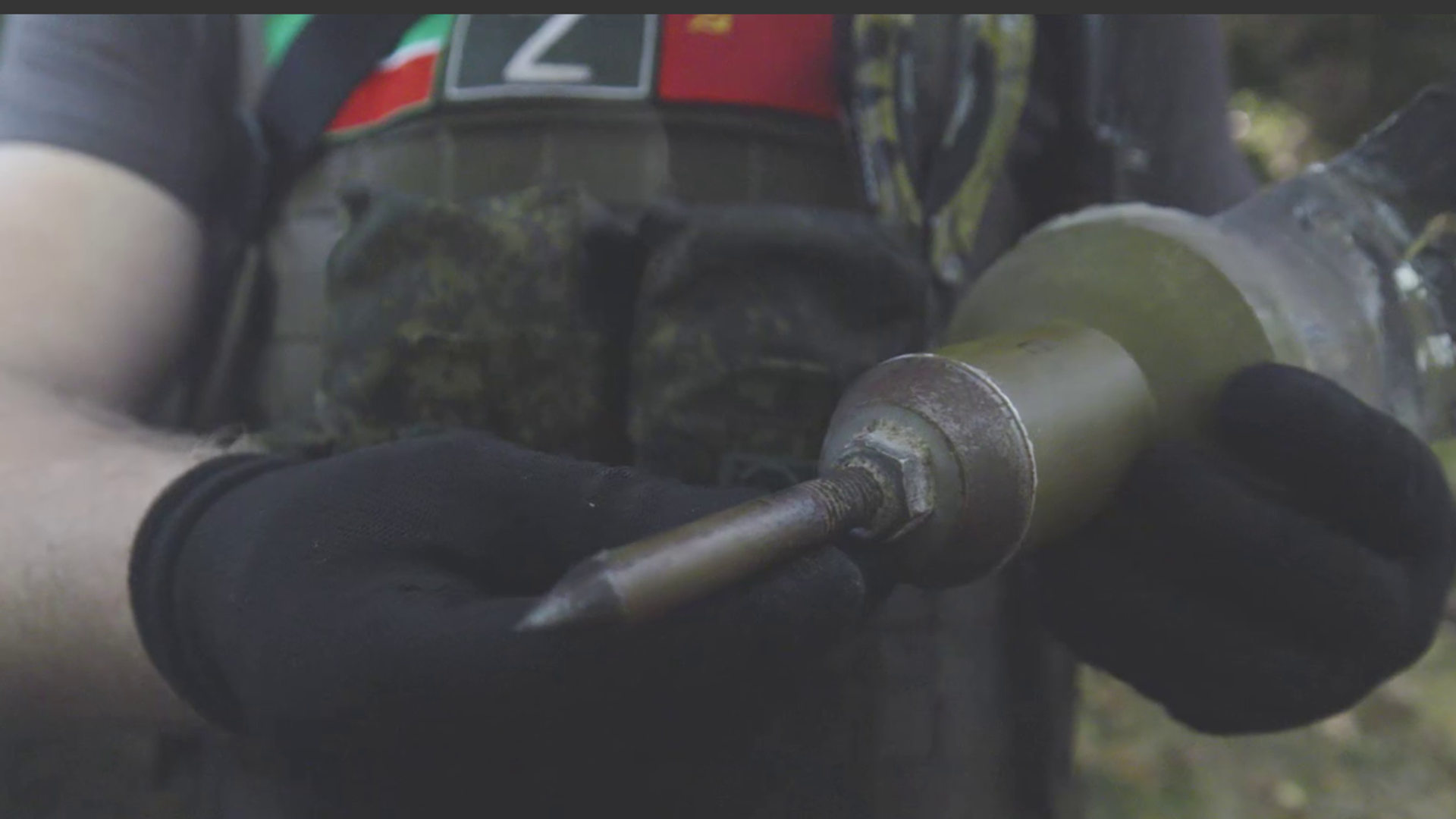https://sputnikglobe.com/20230723/ukraine-converting-soviet-thermobaric-grenades-into-landmines---russian-sapper-1112087151.html
Ukraine Converting Soviet Thermobaric Grenades Into Landmines - Russian Sapper
Ukraine Converting Soviet Thermobaric Grenades Into Landmines - Russian Sapper
Sputnik International
The Ukrainian military has used air-droppable mines extensively and indiscriminately over the past year, targeting not just Russian troops, but civilian infrastructure and settlements. Over the past year, more than 100 civilians in Donetsk region have been injured after stepping on Lepestok scatterable anti-personnel landmines.
2023-07-23T11:56+0000
2023-07-23T11:56+0000
2023-07-23T11:59+0000
russia's special operation in ukraine
rpg-7
russia
ukraine
thermobaric weapon
mine
mine
landmine
video
https://cdn1.img.sputnikglobe.com/img/07e7/07/17/1112086987_95:0:1254:652_1920x0_80_0_0_ba51c6ff0ce1c415de10cd9e25eee10b.png
Ukrainian forces have modified old Soviet-era grenade launcher munitions, turning them into landmines which go off when approached, a Russian sapper has told Sputnik.“Over the past two weeks, the Banderite-fascist enemy has been modifying munitions in this way. They’re modifying ordinary rounds, fitting them with an improved delivery system, fitting them with this kind of tip which sticks into the ground when the ammunition is dropped. A system is installed on the rear of the munition which reacts to movement – to the approach of either equipment or people. Certain parameters are set, and in the event of approach, the munition explodes, destroying its target,” the sapper, going by the call sign Rakhmatulla, told Sputnik.The RPG-7 is a reusable, unguided, shoulder-launched anti-tank rocket-propelled grenade launcher introduced into service with the Soviet military in the early 1960s, and exported to dozens of countries around the world, becoming one of the most ubiquitous shoulder-fired weapons of the 20th century.RPG-7s were designed to fire high-explosive anti-tank (HEAT) or high-explosive/fragmentation rounds, but could also be fitted with thermobaric warheads packed with 1.9 kg of explosives with a lethal radius of up to 10 meters (30 feet).Theromobaric weapons, also known as ‘vacuum bombs’, spray a combustible substance over an area and ignite it, resulting in oxygen from the surrounding air being sucked up and generating a high-temperature explosion.Ukrainian forces have used landmines extensively throughout the 2014-2022 Donbass crisis and after the escalation of the conflict into a full-blown NATO-Russia proxy war from 2022 onward. Human Rights Watch has urged Kiev to comply with its obligations under the 1997 Mine Ban Treaty, and the United Nations has said that it would support an investigation into the matter.
https://sputnikglobe.com/20230630/more-evidence-shows-use-of-banned-landmines-by-ukrainian-forces---human-rights-watch-1111579536.html
russia
ukraine
Sputnik International
feedback@sputniknews.com
+74956456601
MIA „Rossiya Segodnya“
2023
News
en_EN
Sputnik International
feedback@sputniknews.com
+74956456601
MIA „Rossiya Segodnya“
Sputnik International
feedback@sputniknews.com
+74956456601
MIA „Rossiya Segodnya“
ukraine, russia, landmine, mine, thermobaric, weapon, modification
ukraine, russia, landmine, mine, thermobaric, weapon, modification
Ukraine Converting Soviet Thermobaric Grenades Into Landmines - Russian Sapper
11:56 GMT 23.07.2023 (Updated: 11:59 GMT 23.07.2023) The Ukrainian military has used air-droppable mines extensively and indiscriminately over the past year, targeting not just Russian troops, but civilian infrastructure and settlements. Over the past year, more than 100 civilians in Donetsk region have been injured after stepping on Lepestok scatterable anti-personnel landmines.
Ukrainian forces have modified old Soviet-era grenade launcher munitions, turning them into landmines which go off when approached, a Russian sapper has told Sputnik.
“Over the past two weeks, the Banderite-fascist enemy has been modifying munitions in this way. They’re modifying ordinary rounds, fitting them with an improved delivery system, fitting them with this kind of tip which sticks into the ground when the ammunition is dropped. A system is installed on the rear of the munition which reacts to movement – to the approach of either equipment or people. Certain parameters are set, and in the event of approach, the munition explodes, destroying its target,” the sapper, going by the call sign Rakhmatulla, told Sputnik.
“The munition appears to be made from ammunition for the old Soviet RPG-7 thermobaric grenade launcher. Ukraine has accumulated quite a bit of them, and are using them in this way. It’s a very dangerous munition, but we’re familiar with it, have learned to work with it, to counteract it. The most important thing is to remain vigilant and in control over the situation,” Rakhmatulla added.
The RPG-7 is a reusable, unguided, shoulder-launched anti-tank rocket-propelled grenade launcher introduced into service with the Soviet military in the early 1960s, and exported to dozens of countries around the world, becoming one of the most ubiquitous shoulder-fired weapons of the 20th century.
RPG-7s were designed to fire high-explosive anti-tank (HEAT) or high-explosive/fragmentation rounds, but could also be fitted with thermobaric warheads packed with 1.9 kg of explosives with a lethal radius of up to 10 meters (30 feet).
Theromobaric weapons, also known as ‘vacuum bombs’, spray a combustible substance over an area and ignite it, resulting in oxygen from the surrounding air being sucked up and generating a high-temperature explosion.
Ukrainian forces have used landmines extensively throughout the 2014-2022 Donbass crisis and after the escalation of the conflict into a full-blown NATO-Russia proxy war from 2022 onward. Human Rights Watch has urged Kiev to comply with its obligations under the 1997 Mine Ban Treaty, and the United Nations
has said that it would support an investigation into the matter.



